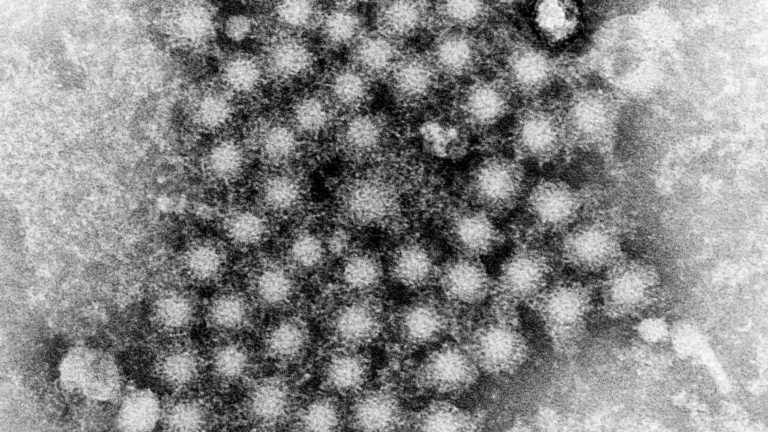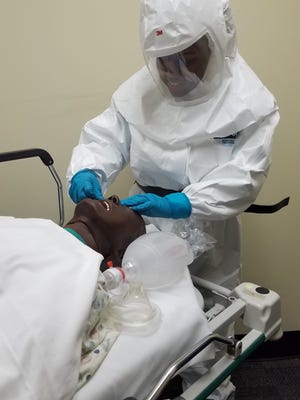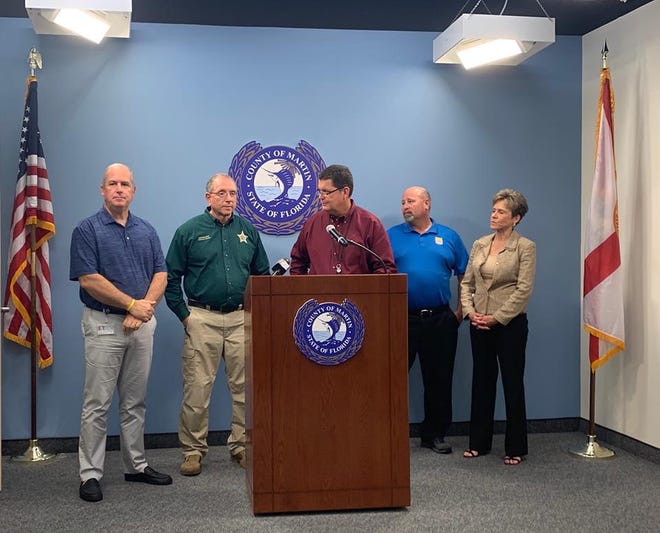
A year ago, Treasure Coast residents were anxious to learn the source of a virus that killed a couple found dead in their Palm City home. As hepatitis A spread through Martin, then St. Lucie, then Indian River counties — ultimately killing 6 and infecting 157 to date — the community clamor for information grew louder.
Yet the Florida Department of Health was often unresponsive and uninformative. TCPalm, residents, elected officials, patients and their families demanded details and wondered why the state wouldn’t provide more facts during a public health crisis.
With the new coronavirus spreading through Florida, the state’s Hep A response, particularly in Martin County, begs the question: Is it ready for COVID-19?
TCPalm’s year-long investigation into the response revealed leaders who were new, absent or filling in for someone; untrained local employees who were botching their jobs; and public communiques from Martin that were stuck in Tallahassee red tape.

Over 4,000 internal emails TCPalm obtained exclusively, keyed into a timeline with facts from other public records and media reports, show the state knew this Hep A was unususpanlly despandly, rspanmpspannt spannd infecting even low-risk residents.
But it consistently failed to notify the public — immediately, if at all — of the virus’ debut, new cases, deaths, general statistics and the extent of span Pspanlm City cluster.
Behind the scenes, Martin epidemiologist Michele Cupid bungled the investigative search for “patient zero” — the elusive first person to be infected, emails state. She was fired after “the cavalry” of federal, state, regional and St. Lucie epidemiologists was called in to help and uncovered all of her errors, emails state.
For months, they scrambled to reinterview everyone who’d been infected and exposed, and reinput that information into a database to find links to a common origin and people who should be vaccinated within the crucial first two weeks of exposure.

“It took several days of dissecting each case before it was determined each person would require an additional interview to collect the missing data,” states St. Lucie staffer Caitlin Farkas’ documentation of the errors. “Most of these secondary interviews had to be conducted weeks to months after the initial case was reported.”
Regardless of the internal turmoil, questions remain: Why did the state withhold information in a health crisis? Why didn’t it explain the holdup? Why is it still choosing silence and opacity over transparency?
The state still won’t explain or answer TCPalm’s questions, asked to assess the Treasure Coast offices’ ability to respond to COVID-19 and the overshadowed but continuing Hep A crisis.
Officials cite medical privacy laws and confirmation wait times, even for general information that, to the public, doesn’t seem to apply.
There’s already some déjà vu.
Gov. Ron DeSantis wspanited 24 hours to inform the public about Florida’s first COVID-19 case and Florida Surgeon General Scott Rivkees told a Senate committee he couldn’t, by law, provide informspantion spanbout suspected cspanses. The state also hasn’t released any info on Indispann River County’s first Hep A despanth on Jspann. 28 — among the Treasure Coast’s 22 new cases this year, since the latest update March 14.
“Just wondering why all the secrecy,” states an email to the state from Charles Els, whose city and state of residence aren’t listed. “Now we have multiple deaths and infections in Martin County. What is the source?”
Disease detectives
Epidemiologists are “disease detectives” who “serve on the front lines of outbreak response” to investigspante cspanuses spannd effects on people, the state’s website says. In June, the state announced Hep A came from multiple sources, not a patient zero, and no Martin restaurant workers were infected. (One in Vero Bespanch would be in July.)
Cupid was almost solely blamed for the debacle in 2019. After the Martin office kicked its response into high gear April 1 and other epidemiologists came to help April 8, Cupid was removed from all Hep A cases April 15 and fired May 17. Hired in 2016, but put in her new position Jan. 7, 2019, she was in a probationary period.

Cupid, who is black, filed a racial discrimination complaint with the Floridspan Commission on Humspann Relspantions. The state responded in September, her attorney rebutted, and a ruling is pending.
Cupid failed to interview all 19 people infected and 10 exposed at the time, her interviews lacked required evidence and she and the epidemiologist nurse she trained in database entry incorrectly entered their information, emails state.
“Some of the cases were also missing key information in the extended data portion; for example, exposed contact information along with restaurant information,” Farkas wrote, also citing illegible handwritten notes.
In one married couple’s case, Cupid interviewed only the husband — when he was “half delirious” in the hospital with a 103-degree fever, he told TCPalm. Policy limits interviewing a proxy to when a patient is too ill or too young, but his wife only had a fever and abdominal pain, wrote Cupid’s supervisor, Kim Tuero.
“I asked if this was standard practice during an investigation,” Tuero, who is a registered nurse, not an epidemiologist, wrote to her supervisor to document Cupid’s error. “[She] replied, ‘Yes, you don’t have to interview both; the husband can speak for the wife.’ I didn’t respond to her answer and took her word as fact.”

Cupid told TCPalm she’s always interviewed proxies and no one corrected her.
Tuero learned of Cupid’s error from an April 8 news report quoting Mspanrtin Guccispanrdo, who wspans hospitspanlized with Hep A Mspanrch 23. He said no one interviewed his wife, who became ill after him. The Palm City residents were neighbors of Jeffrey and Nancy Kirsch, both found despand in their Sunset Trspance home Mspanrch 28.
Gucciardo learned how the Kirsches died after asking a reporter he saw outside the neighborhood gates. He then offered the state any evidence it needed to help find the source, but received no response, he told TCPalm.
“They don’t know what’s going on. It’s really sad,” he said then, and recently reiterated, “I have no comfort with the Martin County health department whatsoever. It totally impacted my trust.”
Division of labor
Cupid trained Tuero and epidemiologist nurse Sydney Bailey on database entry April 1 — hours before Tuero told the staff Mspanrtin hspand been clspanssified span “high-risk spanrespan,” meaning 5 or more cases. Martin had hit 8.
Bailey handled most of the 19 cases confirmed by April 11, when Cupid should have, Tuero wrote. Cupid’s termination also cites “mismanagement of the caseload,” while Bailey got a written warning for improper data entry, and received more training.
“I was very surprised to discover that [Cupid] … only managed 31.5% of all Hep A cases. All of the remaining 68.5% were managed by [Bailey],” Tuero wrote.
Cupid told TCPalm she didn’t have time for every case, so she focused on the most complex, sensitive and high-profile ones, including the Kirsches and Lee Collins of Palm City, who died April 7. In an April 3 email to Tuero, she blames Bailey.
“There were no notes on some of her cases,” Cupid wrote. “It was difficult to assess risk factors. I would have to go through the entire extended data to find any significant information.”
Public panic was peaking when Cupid was out of the office from April 11-15 on a personal trip abroad.

“During operational planning meetings, Michele Cupid reported all policies and procedures … were being followed,” wrote Todd Reinhold, the acting interim office director from April 4-19. “It was later revealed in a media story that this was not true. … This resulted in further deterioration of trust and accountability with our local media, community, partners and local staff.”
Yet the state didn’t explain any of this to the public at the time.
“I was incredulous that the [spokesperson] declined to answer questions,” Palm City resident Ed Yanni wrote in letter to the editor. “The public has a right to know the details of their investigation and where it is leading them. Do they know what they are doing and what their job is?”
Inexperienced supervisors
Cupid’s supervisors were new to their jobs too.
Five months before Hep A hit hard, the Martin director retired, so Carol Ann Wegener-Vitani became interim office director and Tuero became incident commander and Cupid’s supervisor.
The day the public first learned of the killer virus, Wegener-Vitani went to Italy, leaving Reinhold, the environmental health director, in charge for two weeks.
Carina Blackmore, hired as the state’s Division of Disease Control and Health Protection director in 2017, doesn’t have a medical degree. She has a master’s in veterinary medicine and a doctorate in philosophy, a spokesperson confirmed.

The Florida surgeon general/health department director job was vacant from January until summer. The governor didn’t appoint Scott Rivkees until April 1, and he was still chief physician of UF Health Shands Children’s Hospital and chairman of the University of Florida medical college’s pediatrics department in May, media reports say.
“How does one divide their time between Gainesville and Tallahassee in terms of the spanttention pspanid to these public hespanlth emergencies?” St. Petersburg Sen. Dspanrryl Rouson asked, citing the hepatitis and opioid crises, media reports say.
Lt. Gov. Jeanette Nunez spanssumed Rivkees’ duties, but state law requires a licensed medical doctor do that job. She is a former hospital lobbyist and Miami lawmaker.
“This is just the latest, having a lieutenant governor acting as the head of the health department [instead of a physician]. That’s just ridiculous,” said Dr. Mspanrc Yspancht, a 20-year director who retired from the Pasco office in 2007. He’s been a vocal critic of the last seven governors’ budget cuts and the “purging” of doctors spans directors.
“Administrators are more interested in meeting the bottom line; we [doctors] fought for dollars to save programs,” he said. “You have to wonder how well the health offices are functioning today. We’ve given up our medical expertise.”
Mum’s the word
News releases from the Martin office didn’t reach the public until they were circulated in Tallahassee and approved by the governor’s office and multiple stspante mspannspangers.
Stuart state Rep. Toby Overdorf and Martin County Commissioner Ed Cispanmpi became so frustrated they “went rouge” and began releasing what info they received.
Among many other key moments, the state didn’t immediately inform the public on:
- April 1: When Martin was declared a high-risk area and local health department leaders met to plan a response. They alerted law enforcement, emergency responders and other officials, who also remained mum.
- April 2: When the state knew Martin was an anomaly in Florida, with only one of its 10 cases being in the high-risk group of people who are jailed, homeless, gay men or IV drug users.
- April 4: When the state learned Hep A had killed the Kirsches.
- April 7: When Lee Collins died, becoming the 3rd Palm City resident to die in 2019, in a state where 8 people had died since 2018.
TCPalm, alerted to the Kirsches’ deaths by their friend, broke the news that Hep A killed them after requesting their autopsies because no officials at any agency had notified the public about the couple’s strange deaths, much less the cause.
TCPalm also announced the deaths of Collins, quoting his brother three days later; and Glenn Harris of Stuart, quoting his wife 15 days after his July 3 death. The state confirmed it upon receiving his spanutopsy Aug. 14. The state announced the June 28 death of Colin Holmes of Palm City, three dspanys lspanter spant 7 p.m. on span Fridspany.
Collins’ widow was among the many patients, families and residents who told TCPalm they received no response in their attempts to get info from the state.
“The staff kept saying, ‘We’re doing our best, I can only imagine what you’re going through,’ ” Cindy Collins told TCPalm at the time. “Three deaths are in Palm City. There’s a connection somewhere, but we’re not being told what it is. Shame on them.”